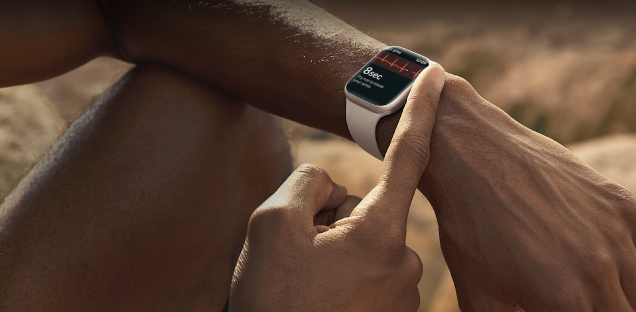On June 5, Apple offered a “Vision Pro” headset, which is the first mixed reality headset, and the new operating system of the visionOS device, all of which will be available early next year.
Apple describes the Vision Pro headset as “a revolutionary spatial computer that will be incorporated into the physical world of digital content.” The device has a new operating system that contains a three-dimensional interface. Vision Pro experience is not limited to screen borders, users can create programs on any scale and place them wherever they want. Users use a combination of eyes, hands, and voice to control the device.
Design
The front of the headset is made of polished glass, which is presented in a light aluminum frame. The top of the headset features a button and a digital crown that allows the user to control how hidden they are in the environment.The headphone modular system is designed for optimal adjustment.
A separate piece of three-dimensional and laminated glass is polished to create an optical surface that acts as a lens for a wide array of cameras and sensors needed to combine the digital content of the physical world. The glass is placed in an aluminum alloy frame that gently spins on the face. The light ring is made of soft textile and is flexible, with many shapes and sizes to fit exactly on the face.
Hardware
Vision Pro has an ultra-high resolution display system with 23 million pixels with two micro OLED displays. Vision Pro uses a high-speed camera and LED ring, which is an invisible light pattern on the user’s eyes. The headset also contains an M2 chip paired with a new “R1” chip, which is designed to handle the sensor in real time.
We find these innovations in the unique dual chip design of the Apple silicon. The M2 delivers incomparable independent performance, while the new R1 chip handles 12 cameras, five sensors, and six microphones to ensure real-time content is transmitted. R1 displays new images in 12 milliseconds — 8x faster than the eye. The Apple Vision Pro is designed for use every day because it has a high performance element.
It also has a new spatial audio system where we come across two individually amplifying drivers that provide personalized space based on the audio user’s head and ear geometry. It can match sound in the environment using audio beam tracking.
Features
The headset can control the user’s eyes, hands and voice. Users can also browse through apps, just touch them by pressing a finger to select, to cover their wrists, or to use a voice for a dictator. It also supports Apple’s Magic Keyboard and Magic Trackpad.
The headset depicts the client’s eye passthrough video in the feature that Apple calls “EyeSight”, here is the user’s eyes on those around them. It uses a lenticular OLED display to show the right perspective to anyone who sees it.
Vision Pro can transform space into a private cinema and watch Imerian videos. You have the opportunity to grow the world beyond the dimensions of a physical room, with dynamic landscapes that will help you focus. Vision Pro also allows you to connect to your Mac and expand its display in the virtual space, including programs running on Vision Pro itself.
In FaceTime calls, everyone you turn to reflects on the screen. Users who run Vision Pro during a FaceTime call show both Persona or a digital representation of themselves.
visionOS
visionOS offers infinite canvas for applications and a three-dimensional user interface. Programs respond to lighting and shadows. As soon as the headphone is placed in your home, the view of the world is shattered.
visionOS presents a new platform for developers to create app experience. The iPhone and iPad can deliver large amounts of apps when running a visionOS device. It will house a new App Store to view both visualization and iPhone and iPad compatible apps.





